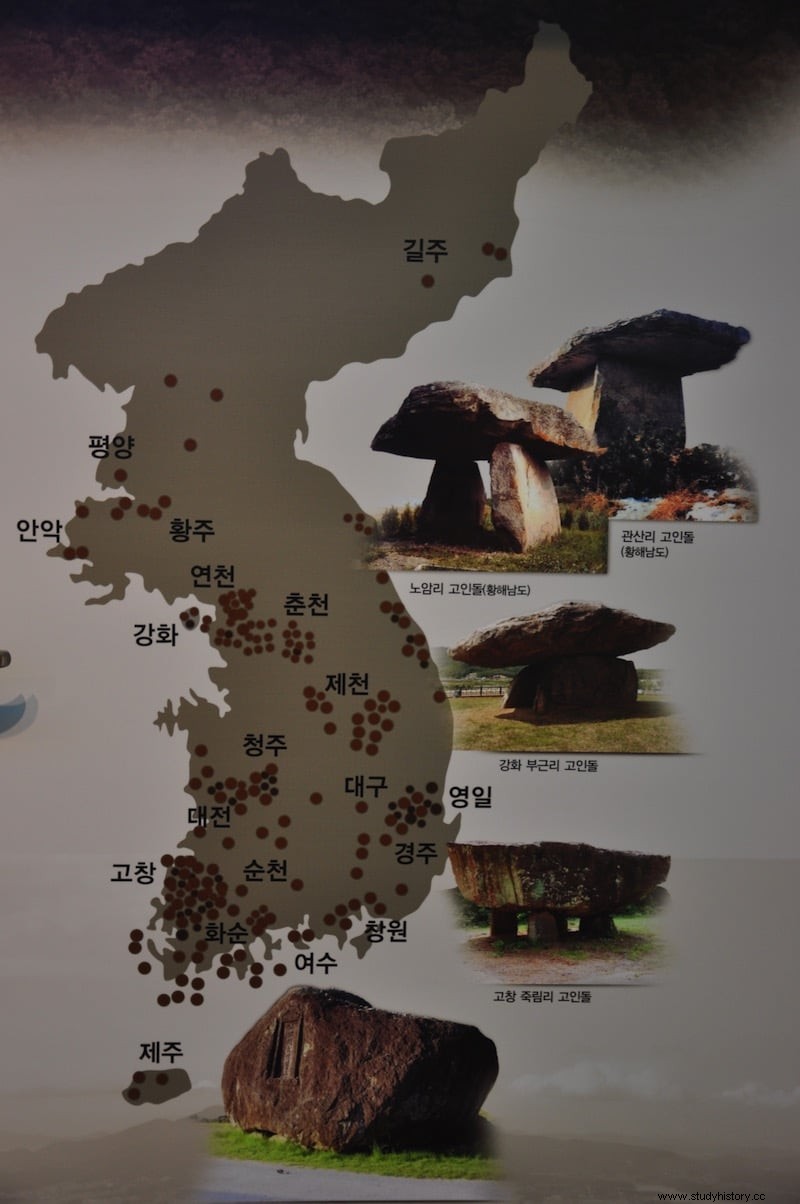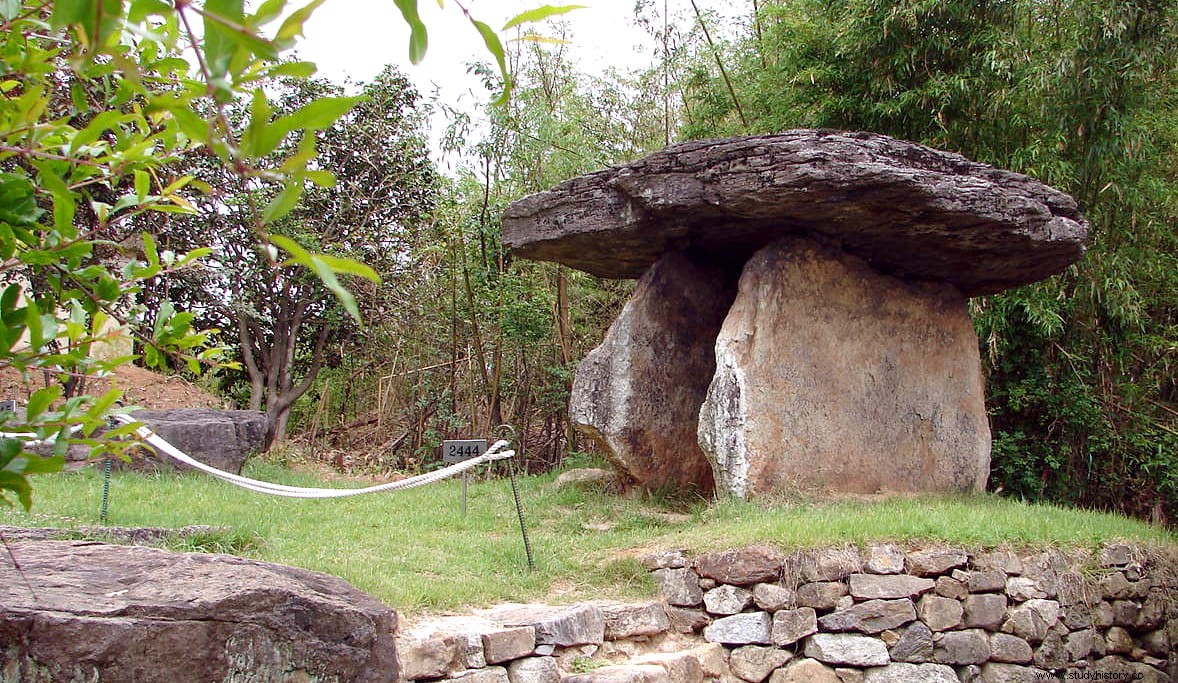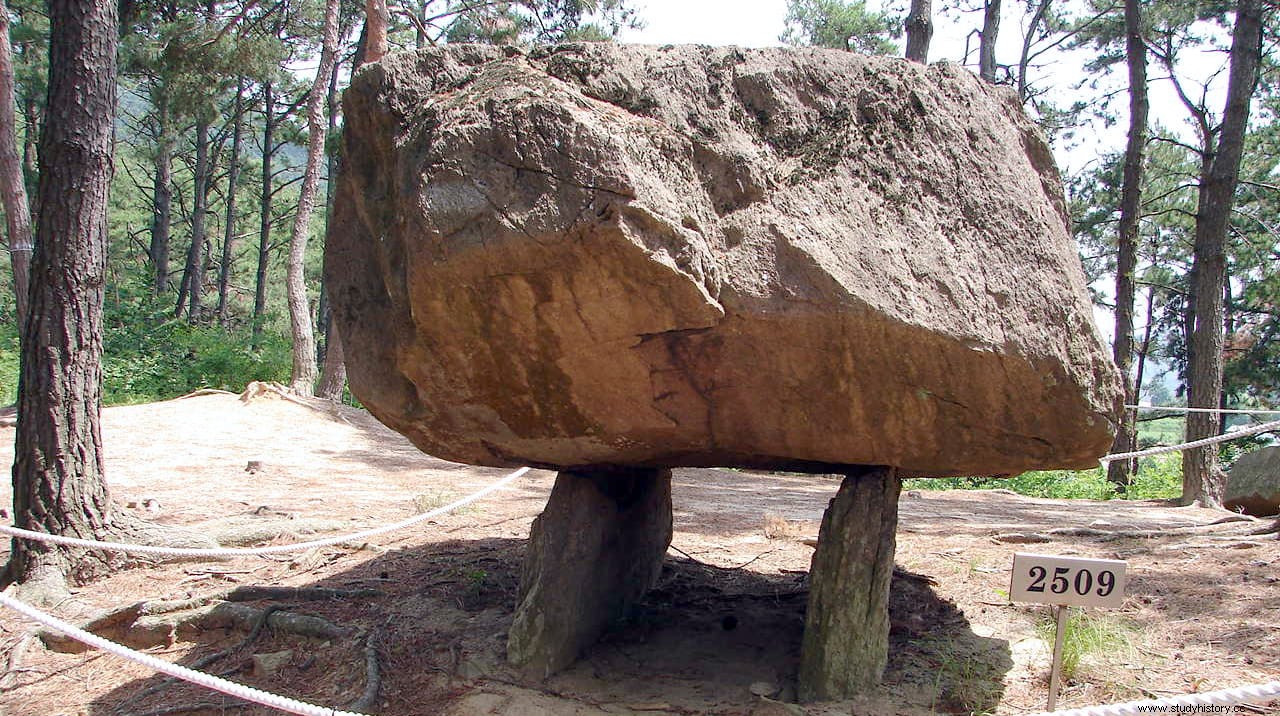Dolmen is a word, supposedly of Breton origin although its etymology is not very clear, which means large stone table . They are called antas in Galicia, cromlechs in Cornwall, and in very different ways elsewhere. They are megalithic tombs or chambers made up of two or more megaliths, generally two arranged vertically supporting another horizontally, although there are many variants.
Most date from the early Neolithic, between 4000 and 3000 BC, and their exact function is not known. The oldest are found in Western Europe and are believed to be tombs since human remains have sometimes been found accompanied by objects in them, whose dating is possible by means of radiocarbon. The problem is that it is not possible to know if the placement of the stones dates from the same date as the remains.
We generally associate these constructions with places like Spain, Portugal, Ireland, Wales, Cornwall, or France. Perhaps among the best known are those of Carnac in French Brittany, abundantly reproduced in photographs, posters and tourist propaganda.

And there are specimens in places like Russia, India or North Africa. But perhaps it is less known than the place with the most dolmens in the world it is practically on the other side of the planet:the Korean peninsula .
Up to 40 percent of all dolmens in the world they are found in Korean lands, being, as is logical, those of North Korea the least studied and known of all. The largest distribution of dolmens is found in the western coastal area of South Korea. The Gochang, Hwasun and Ganghwa deposits are among the three more than a thousand and have been declared a World Heritage Site in the year 2000.
The Korean dolmens have a different morphology from that of the European ones, and they are more recent chronologically, from the end of the Neolithic to the first millennium before our era, when they had long ceased to be erected in Europe. There they call them goindol which translates as held stone . Its study and research is also relatively recent compared to its European counterparts, more or less since the end of World War II.

In Gochang 442 dolmens have been counted, which are located at the foot of a series of hills that rise between 15 and 50 meters above sea level. The upper stones are usually between 1 and 5.8 meters long, with the largest weighing about 225 tons. They are believed to date back to the 7th century BC
Hwasun's group It is arranged along the Jiseokgang River, but they are less well preserved. The researchers have managed to identify one of the quarries from which the stones were extracted, and the estimated dating is somewhat more recent, between the 6th and 5th centuries BC

Those of Ganghwa Island they are thought to be the oldest of all because they resemble Europeans, although there is no conclusive evidence of this. They are the ones located at the highest altitude, and it is here where the largest dolmen in all of Korea is located, with dimensions of 2.6 x 7.1 x 5.5 meters.
Where it came from, how or why the Korean megalithic culture arose, are questions that still remain unanswered today. It is also not known why such an impressive number of dolmens were erected, nor why this culture did not spread to the rest of Asia.
Only a few specimens have been found in the Manchuria region of northern Korea and on the Shandong Peninsula.
